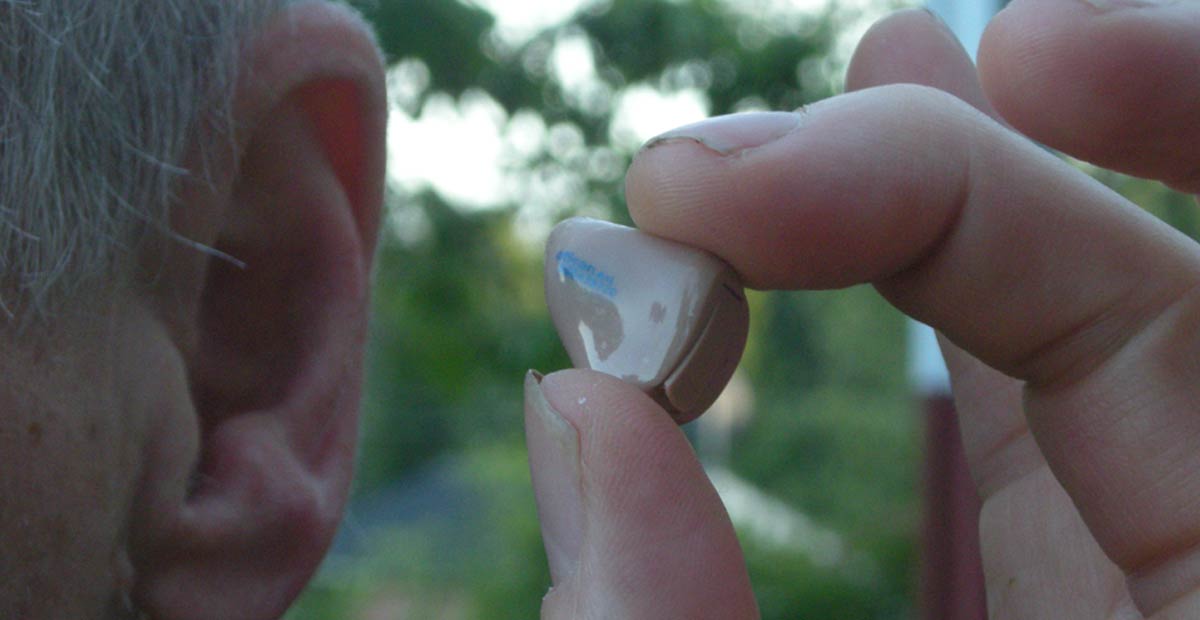When one thinks of seniors and their use of technology, images of iPads, Jitterbug cell phones and video calls with loved ones come to mind, but changes to technology are burgeoning across many fields that effect older adults. One area that is often overlooked, but has experienced major progress, is hearing technology and hearing assistance devices.
Old cartoons loved to portray a senile oldster with a hearing trumpet placed to their ear, often equally as large the person utilizing it. Later, we see massive hearing aids, dwarfing the size of the ears of the wearer. Not only were these devices unsightly, they often malfunctioned, emitting high pitched squeals or failing to pick up on voices amplified by microphones or audible emissions from other electronic devices such as computers and phones. It’s no wonder most people with hearing impairment preferred to suffer in silence rather than wear a hearing aid.
Yet today, hearing aids are better than ever! A 2008 paper, written by Jessica Kerckhoff, Jennifer Listenberger and Michael Valente and published by the American Speech Language Hearing Association, discusses the dramatic changes that have occurred with hearing technology devices. The key to all the advances is a new understanding of Digital Signal Processing (DSP) and the use of directional microphones.
DSP technology is now being employed in nearly every listening device. It’s used to cut down on ambient noise and interference, better enabling the listener to hear the intended message. Thanks to DSP, hearing assistance devices are now filtering out unwanted sounds and amplifying the signals that need to reach the user. Think of a couple walking down the street and talking. At one time, a hearing aid would have picked up and amplified every sound, from the banging of trash can lids to the barking of dogs and the squeals of tires. Utilizing DSP, the wearer now hears the voice more clearly, as the background noises are softened in comparison.
The greatest advances were made when DSP coupled with directional microphones. Whereas most microphones, whether on a stage or in a hearing aid, can pick up sounds from all around it, directional microphones are able to analyze wear the sound is coming from, prioritizing it (utilizing DSP) and amplifying the appropriate sounds. By understanding the direction of sounds, as well as their pitch, volume and more, DSP and directional microphones continue to strive to offer a true hearing experience for a listener.
Adults continue to avoid the use of hearing aids, but with these advances in hearing technology, scientists are edging ever closer to constructing a hearing aid that replicates our natural senses. We encourage everyone to speak with their audiologist to find a hearing assistance device that is right for them!
Sources:
http://www.asha.org/uploadedFiles/asha/publications/cicsd/2008FAdvancesinHearingAidTechnology.pdf




